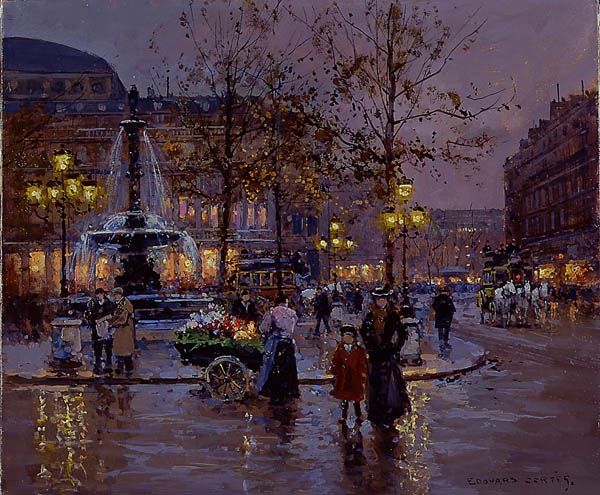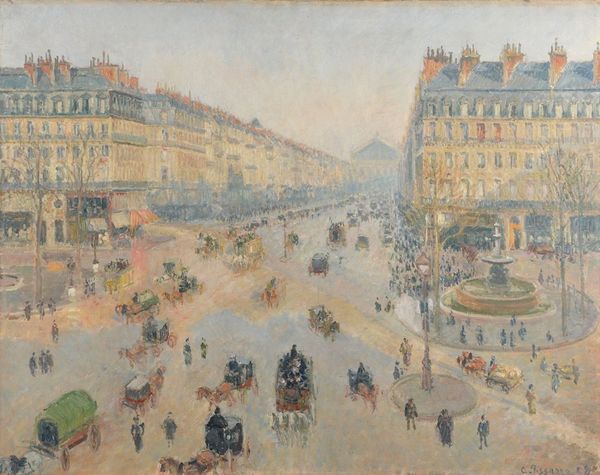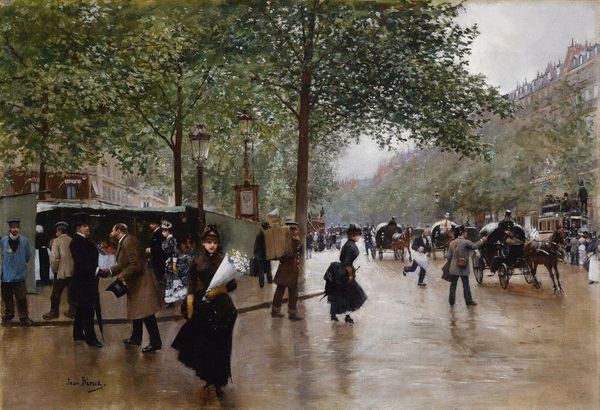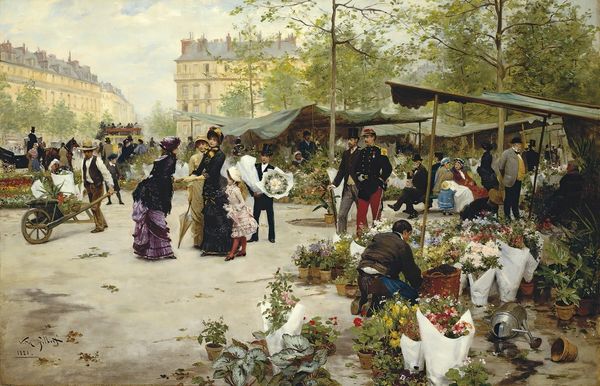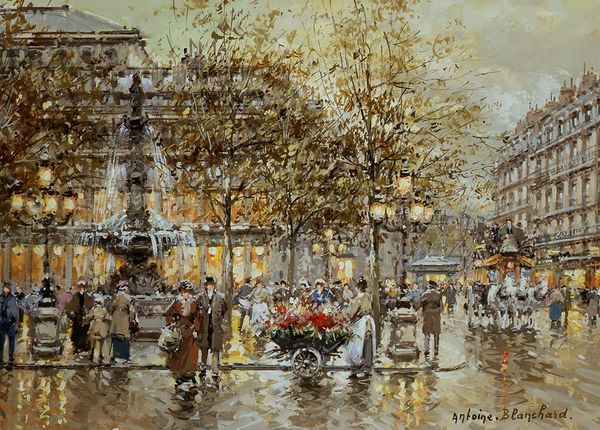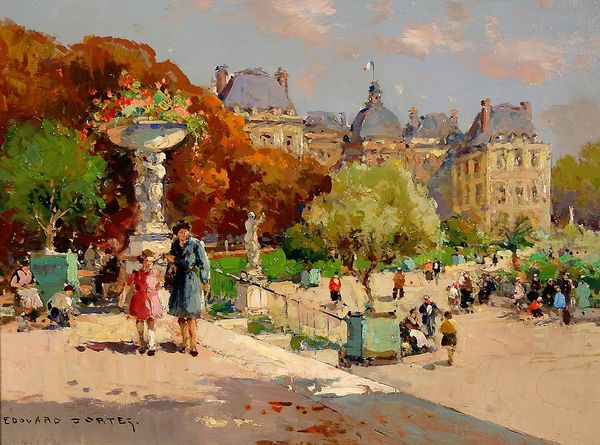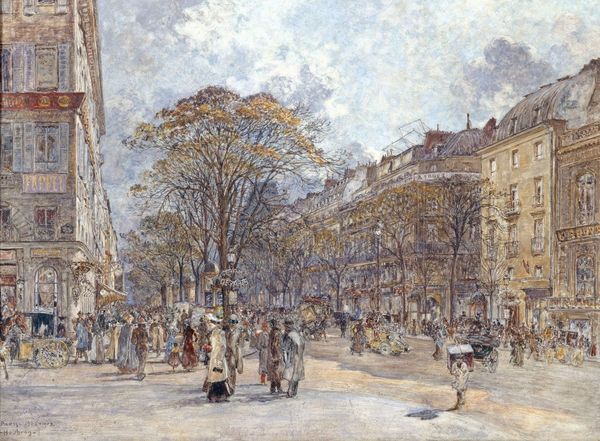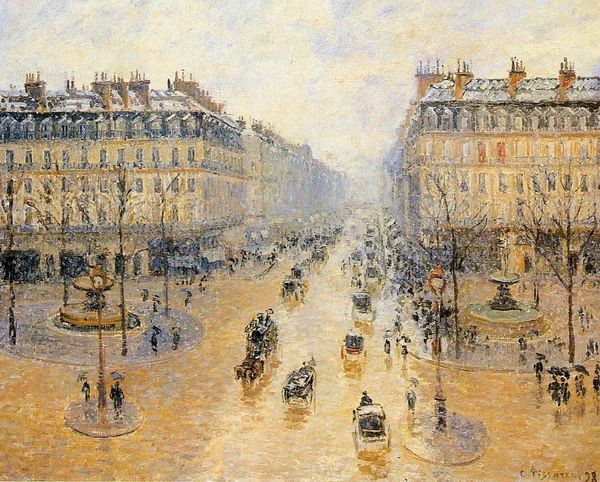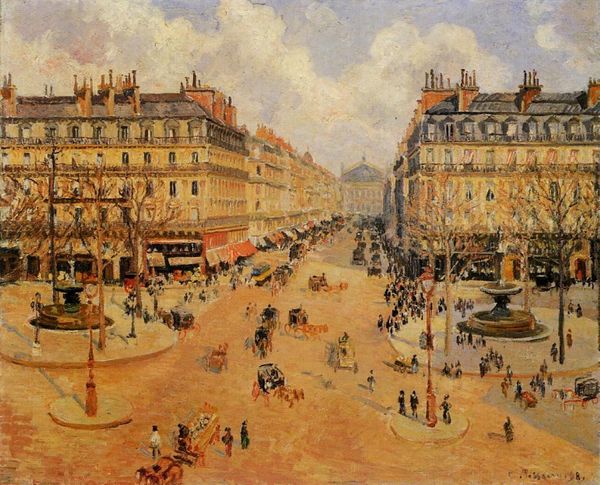
Copyright: Public Domain: Artvee
Editor: Here we have Victor Gabriel Gilbert's "La Place du Théâtre Français," circa 1895. It looks like an oil painting done en plein-air. The light reflecting off the wet pavement gives the whole scene a very vibrant, almost hurried feeling. What do you see in this piece, especially concerning its historical context? Curator: I see a careful orchestration of public space. Gilbert presents a specific view of Parisian life, consciously framing it for his audience. Look how he focuses on the elegant passersby and carriages, largely omitting the more impoverished realities of the time. The location itself, near the Comédie-Française, a highly respected theatre, reinforces this focus on the cultured elite. Editor: So, you're suggesting he's not presenting a complete picture of Paris? Curator: Exactly. The painting promotes an image of Parisian sophistication, catering to a specific clientele—likely affluent art buyers seeking romanticized depictions of the city. He is selling an idea of Paris, influenced by market demands. Why do you think he chose this particular view, cropped as it is? Editor: Perhaps to showcase the modernity of the city, but through a very selective lens, keeping out any signs of urban problems? The inclusion of those fresh flower displays emphasizes a kind of cultivated beauty. Curator: Precisely! And the loose brushstrokes, characteristic of Impressionism, serve not just as an aesthetic choice, but as a way to soften the edges of reality. He's constructing a very appealing, consumable image. We must consider that the style became fashionable, widely exhibited and sold in commercial galleries. Editor: That's really interesting. I hadn't considered how deliberately curated the image actually is. Curator: It’s a fascinating intersection of art, commerce, and the construction of cultural identity. Editor: This really shifts my perspective on how I understand impressionistic cityscapes. Thank you.
Comments
No comments
Be the first to comment and join the conversation on the ultimate creative platform.



